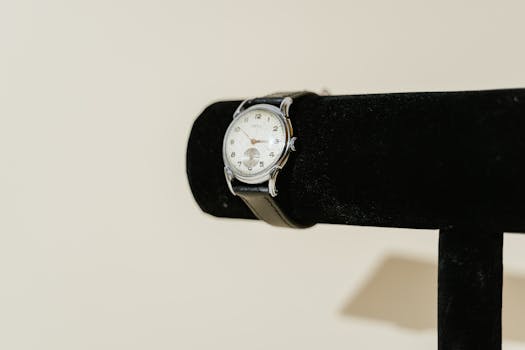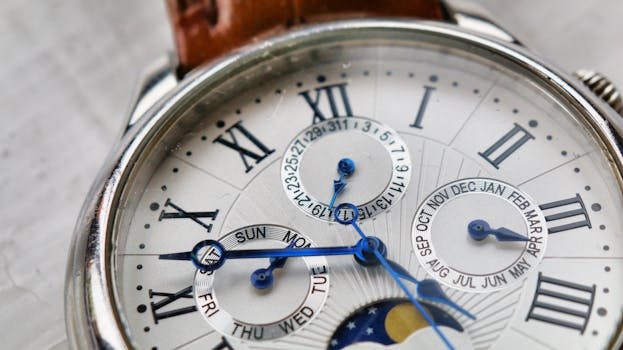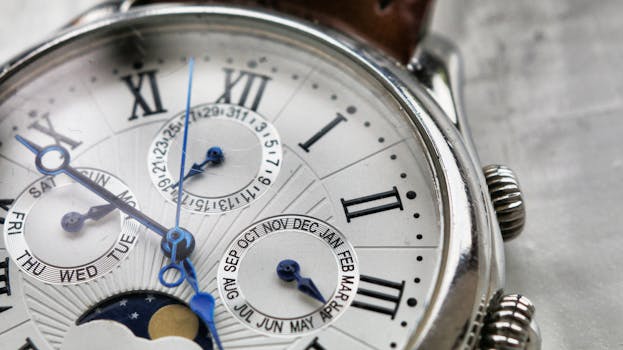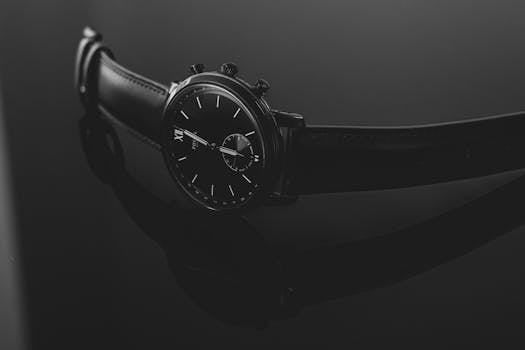The Timeless Evolution of Wristwatches Through the Decades
Takeaways: The history of wristwatches showcases their transformation from practical timekeeping devices to luxury fashion statements. Each decade brought innovations and styles that reflected the cultural shifts and technological advancements of the time.
Wristwatches have come a long way since their inception in the 16th century. Initially designed for pocket use, they evolved into the popular wrist-worn accessories we know today. This article will explore the evolution of wristwatches through the decades, highlighting key trends, technological advancements, and influential brands that have shaped the industry.
The 1920s: The Birth of the Modern Wristwatch

One of the most notable introductions during this period was the Cartier Tank watch, which debuted in 1917 but became a fashion staple in the 1920s. Its rectangular case and elegant design set the standard for women’s wristwatches, establishing a trend towards more delicate and decorative pieces.
Men’s wristwatches also began to gain acceptance, particularly due to their practicality during World War I, where soldiers found it easier to check the time on their wrists rather than fumbling through their pockets. Brands like Longines and Omega developed watches that combined functionality with style, paving the way for the modern wristwatch.
The 1930s: Innovation and Art Deco Influence

Swiss watchmakers began to experiment with new materials, introducing stainless steel cases and innovative movements. The introduction of water-resistant watches also began in this decade, with brands like Rolex leading the charge with their Oyster case design. This innovation allowed watches to be worn in a variety of environments, combining style with practicality.
Notable models from this era include the Jaeger-LeCoultre Reverso, which featured a unique flip-over case that protected the watch face, and the Omega Marine, which was one of the first water-resistant watches. These designs set the stage for the future of wristwatches, emphasizing both functionality and elegance.
The 1940s: The Impact of World War II

During this time, wristwatches became essential for pilots and soldiers, who relied on accurate timekeeping for navigation and coordination. The iconic Rolex Submariner and the Breitling Navitimer emerged during this period, with features tailored for aviators and divers alike.
After the war, the popularity of these military watches continued as soldiers returned home and sought practical yet stylish timepieces. This led to a broader acceptance of wristwatches among the general public, setting the foundation for their status as everyday accessories.
The 1950s and 1960s: The Rise of Luxury and Diversification

Wristwatches also diversified into niche markets, with specialized models for divers, pilots, and even space exploration. The Omega Speedmaster, for instance, was famously worn by astronauts during the Apollo missions, solidifying its place in horological history.
Additionally, the fashion industry embraced wristwatches, leading to collaborations with designers and the introduction of colorful and playful designs. Brands like Swatch emerged, offering affordable yet stylish options that appealed to a younger audience.
The 1970s: Quartz Revolution and Digital Era

During this decade, digital watches also made their debut, introducing features like calculators and alarms. The Casio F-91W became an iconic model, known for its affordability and practicality. However, traditional watchmakers faced challenges as consumers gravitated towards these new technologies.
Despite the rise of quartz and digital watches, mechanical watches remained popular among enthusiasts and collectors. Luxury brands adapted to the changing market by emphasizing craftsmanship and heritage, ensuring that traditional watchmaking would continue to thrive.
The 1980s to Present: Revival and Smartwatches

Fast forward to the 21st century, and the wristwatch market has continued to evolve with the advent of smartwatches. These devices have integrated technology with traditional timekeeping, offering features like fitness tracking, notifications, and customizable watch faces. Brands like Apple and Samsung have become dominant players in this space, appealing to tech-savvy consumers.
However, traditional watchmakers have responded by creating their own smartwatches or enhancing their mechanical offerings with modern features, catering to a diverse audience. The appreciation for horology remains strong, as enthusiasts continue to celebrate the craftsmanship and artistry behind mechanical wristwatches.
The Future of Wristwatches




